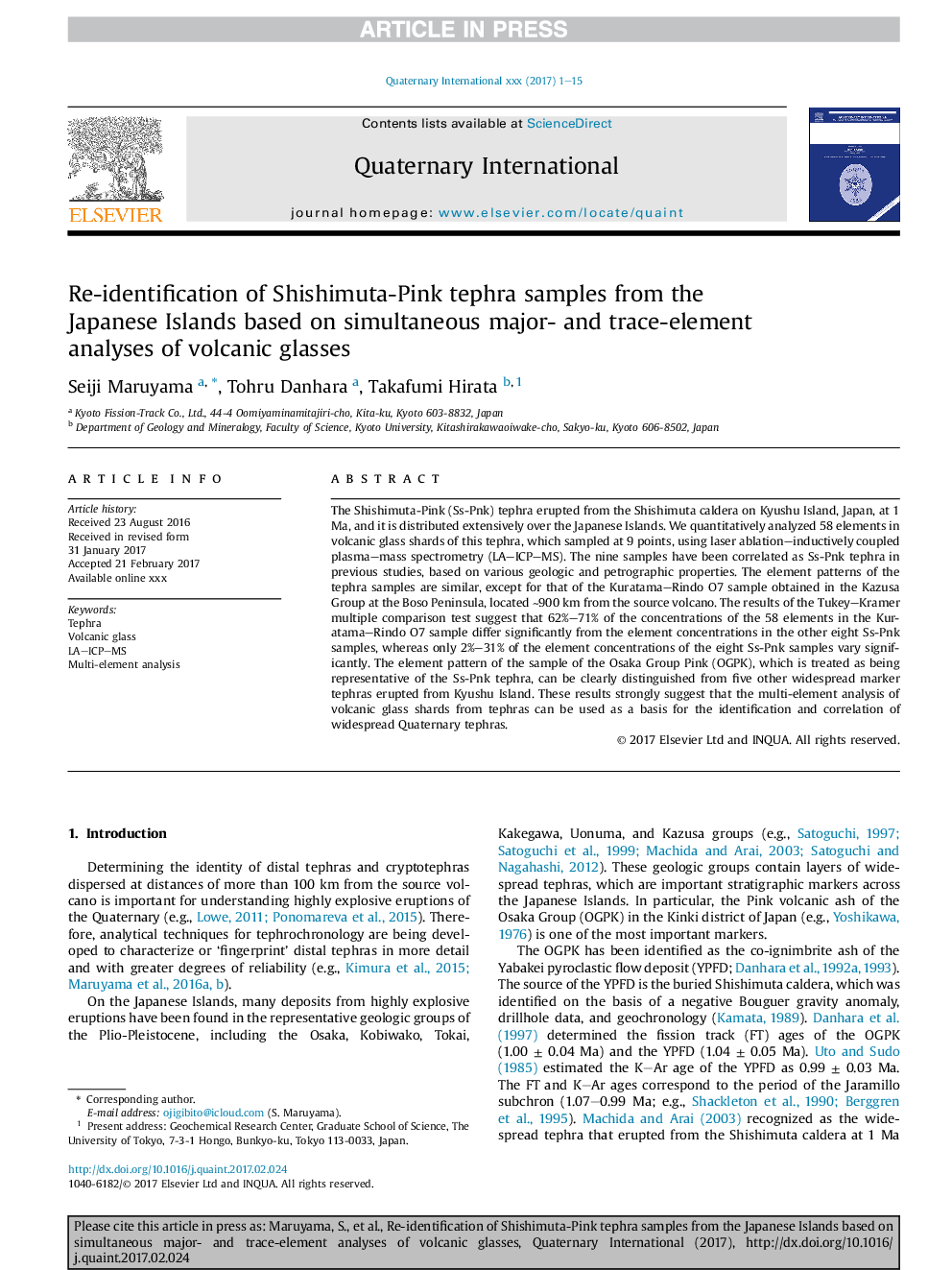| Article ID | Journal | Published Year | Pages | File Type |
|---|---|---|---|---|
| 7451315 | Quaternary International | 2017 | 15 Pages |
Abstract
The Shishimuta-Pink (Ss-Pnk) tephra erupted from the Shishimuta caldera on Kyushu Island, Japan, at 1 Ma, and it is distributed extensively over the Japanese Islands. We quantitatively analyzed 58 elements in volcanic glass shards of this tephra, which sampled at 9 points, using laser ablation-inductively coupled plasma-mass spectrometry (LA-ICP-MS). The nine samples have been correlated as Ss-Pnk tephra in previous studies, based on various geologic and petrographic properties. The element patterns of the tephra samples are similar, except for that of the Kuratama-Rindo O7 sample obtained in the Kazusa Group at the Boso Peninsula, located â¼900Â km from the source volcano. The results of the Tukey-Kramer multiple comparison test suggest that 62%-71% of the concentrations of the 58 elements in the Kuratama-Rindo O7 sample differ significantly from the element concentrations in the other eight Ss-Pnk samples, whereas only 2%-31% of the element concentrations of the eight Ss-Pnk samples vary significantly. The element pattern of the sample of the Osaka Group Pink (OGPK), which is treated as being representative of the Ss-Pnk tephra, can be clearly distinguished from five other widespread marker tephras erupted from Kyushu Island. These results strongly suggest that the multi-element analysis of volcanic glass shards from tephras can be used as a basis for the identification and correlation of widespread Quaternary tephras.
Related Topics
Physical Sciences and Engineering
Earth and Planetary Sciences
Geology
Authors
Seiji Maruyama, Tohru Danhara, Takafumi Hirata,
